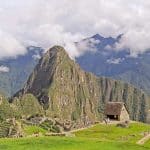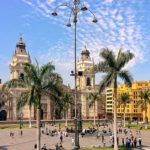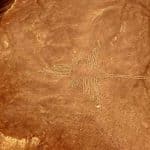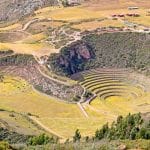The Sacred Valley of the Incas is a valley in the Andes Mountains which is situated between the Urubamba River and the Vilcanota Mountain Range. This natural feature is surrounded by numerous other rivers, snow-capped peaks, canyons, hills, smaller valleys, archeological sites, and traditional towns.
During the reign of the Incas, this spot was very much appreciated both for its mild climate and for its geographical location. In the fertile soil of the valley, the very best agricultural produce was grown. This was the preferred food of the Incan court. And the vacation palaces of the Incan nobility were built in the green meadows of the valley.
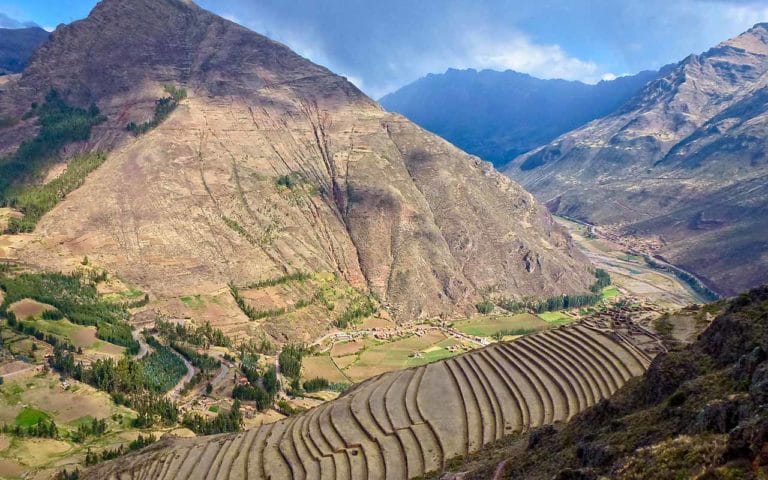
Currently, the Sacred Valley of the Incas is one of the most visited tourist destinations in Cusco, in Peru, in the Americas, and in the whole world. It is the entry way to Machu Picchu. It is also a great place for travellers to relax on their way to Machu Picchu. One reason for this is because the majority of the best hotels in Cusco, and the best hotels in all of Peru can be found here in this beautiful, scenic environment.
Where is the Sacred Valley located?
The Sacred Valley of the Incas is located along the banks of the Urubamba River. (This river is also called the Vilcanota River.)The valley is located 52 km. to the northeast of the city of Cusco, and the principle towns in the valley are: Pisac, Calca, Yucay, Urubamba and Ollantaytambo.
Climate and temperature range in the Sacred Valley
One of the noteworthy characteristics of the valley is its mild, cool climate. Normally, the temperature range is between 4° and 23 °C.
Elevation
In comparison to Cusco which is at an altitude of 3399 masl., the valley is found at an elevation of 2900 masl. To be more exact, here is a list of the elevations of the principle towns in the Sacred Valley of the Incas: Pisac 2972 masl., Calca 2925 masl., Urubamba 2871 masl., and Ollantaytambo 2792 masl.
- Pisac 2972 masl.
- Calca 2925 masl.
- Urubamba 2871 masl.
- Ollantaytambo 2792 masl.
What is there to see and do in the Sacred Valley?
During your tour of the Sacred Valley you can:
- Visit the incredibly impressive archeological sites of: Pisac, Ollantaytambo, Uchuy Qosqo, Moray and Chinchero.
- Explore the ancient villages of: Pisac, Yucay, Calca, Urubamba, Ollantaytambo, Maras and Chinchero.
- Enjoy the fantastic cuisine that you will find at the innumerable tourist restaurants and traditional restaurants.
- Take part in one of the many the adventure sports which are offered in the valley: river rafting, hiking on the mountain trails, hot-air balloon flights, paragliding, horseback riding, zip-lining, riding four-wheeler ATV’s, and rock climbing.
- Participate in community activities through rural tourism and traditional tourism.
Tourist attractions
The entire Sacred Valley is surrounded by:
- Incredibly beautiful scenery like the snow-capped peaks of Chicón Mt., Verónica Mt., Sahuasiray Mt., and beautiful glacial lagoons such as: Piuray Lake, Huaypo Lake, and Cancan Lake.
- Amazing archeological complexes such as those in Pisac, Ollantaytambo, Uchuy Qosqo, Moray, and Chinchero.
- Traditional towns which have been here for thousands of years like Pisac, Ollantaytambo, Maras, and Chinchero.
- Ancient crafts markets such as those at Awanacancha, Pisac, and Chinchero.
Nevertheless, it is good to clarify that the most visited tourist sites in the Sacred Valley are:
The Pisac Archeological Complex

The Pisac Archeological Complex is located 41 km. to the northeast of the city of Cusco and 9 km. from the village of Pisac which lies at the foot of these ruins. This site is one of the most important and most visited archeological complexes in the Sacred Valley. According to some historians, it was the old country home of the Inca Pachacútec. On the other hand, different studies have determined that Pisac was established to defend the southern entrance to the Sacred Valley, and to control the route into Cusco from the jungle.
The ruins stand on top of a hill which is bordered on both sides by gorges. It extends for an area of 4 sq. km. in which there are plazas, towers, roads, agricultural terraces, storage sites, neighborhoods, walls, tunnels, bridges, granaries, astronomical observatories, aqueducts, fountains, and some unforgettable viewpoints from which you can see up and down the incredibly beautiful Sacred Valley.
Among the most notable spots in the Pisac Archeological Complex are the Pisaq’a neighborhood, the Tianayuc neighborhood, the K’allaq’asa neighborhood, the Quntas Racay neighborhood, the Amarupunku ceremonial neighborhood, the Intiwatana neighborhood, the Tanaqanamarka cemetery, the terraces at Acchapata, and the Pisac towers.
The Pisac Crafts Market
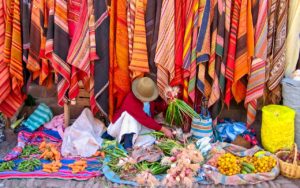
The Pisac Crafts Market is located on the Plaza de Armas in the center of the town of Pisac. Traditionally, the market took place every Sunday and it served as a point of exchange for local valley dwellers that brought their produce and handicrafts to town. However, due to the large inflow of tourists, the market is now open every day, and is primarily a crafts market.
Here in the crowded souvenir stalls, you will be able to find the finest Andean weavings and hand-crafted items made by local artisans. In the opinion of many travellers, this is the ideal spot to purchase souvenirs to take home for your friends and family.
The best day to visit the market is Sunday, because this the day that the market is full of tourists and local people who have come to town all dressed up in their finest traditional garb.
The Fortress of Ollantaytambo
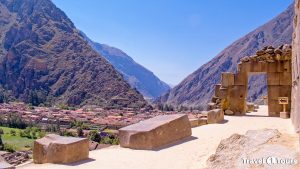
The mythical Fortress of Ollantaytambo is located just north of the traditional town of Ollantaytambo. Ollantaytambo is a living Incan town where you can still appreciate the old architecture and the original Incan pathways.
Most likely Ollantaytambo functioned as a military, religious, administrative, and agricultural center. Some scholars have theorized that it was also a strategically located tambo that controlled ingress into the Scared Valley.
Other historians associate the founding of the town with the Incan warrior, Ollantay. Legend has it that he fell in love with Pachacutec’s daughter, and had the fortress built to resist the Inca army.
Within the town you can find fountains, aqueducts, terraces, and temples. All were constructed out of large stone blocks which were transported from distant quarries on the opposite side of the Vilcanota River.
Here is a list of the principle areas of Ollantaytambo: the Intiwatana Sector, the Control Zone, the Temple of the Sun, the Ten Niches, the Main Wall, the pre-Inca Sector, the Ceremonial Fountain, the Bath of the Princess, the Temple of Water, the Incamisana, and the area of the qolqas (storage towers).
You should not forget that Ollantaytambo is the obligatory gateway to Machu Picchu. Of course, Ollantaytambo is where the Ollantaytambo train station is located.
Awanacancha Textile Center
Awanacancha is a traditional textile center. Fourteen local communities are involved in the project. It is a palace for weaving and a living museum of Andean tradition where a visitor can observe every phase (the shearing, spinning, dying, and weaving) in the process by which clothes and tapestries are made from the wool of alpacas and llamas.
Another reason to stop by and visit Awanacancha is to take some photos of the alpacas, llamas, and vicuñas. You can also buy blankets, bags, tapestries, hats, ponchos, and bracelets made out of alpaca wool and baby alpaca wool.
Moray Experimental Agricultural Center
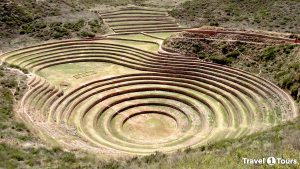
Moray was a center for agricultural research during Incan times. Here the Incas were able to adapt important food crops to grow in different climatic zones. It is thought that over 250 varieties of plants were cultivated and experimented on here. Other scholars have concluded that the site functioned as an astronomical observatory where the Incas tracked the passage of the seasons and where climatic changes were also monitored.
Moray is composed of 4 concentric circles that have been excavated to a depth of 150 meters and terraced. Each forms a beautiful amphitheater that resembles a maternal womb. It is also believed that the micro-climate varies from terrace to terrace, getting warmer as the terraces descend. Each terrace forms its own little micro-climate.
This complex is surrounded by roads, stairways, and an incredible irrigation system. In addition, the view from Moray is fantastic. From the ruins you will be able to appreciate the natural splendor of the Sacred Valley.
In order to learn more about Cusco, we recommend that you visit our post: Tourist Attractions of Cusco.
Chinchero Archeological Center

Chinchero Archeological Center is an important tourist destination. Near the plaza you can see where the Church of Our Lady of Monserrat was built upon the foundations of the Palace of Inca Tupac Yupanqui. Chinchero is very popular site, partly because this very traditional town is the first town that you will pass through when you are entering the Sacred Valley from Cusco via Poroy.
Besides the colonial church, in which you will find innumerable paintings by artists of the Cusco School, there is the Inca’s Palace which was constructed of giant blocks of finely cut stone. There is also an extensive plaza with 10 trapezoidal niches, an amazing system of agricultural terraces, a majestic stone platform, a great atrium, and the fabulous Incan road which connects Chinchero with the Sacred Valley.
Some other great reasons why you should visit Chinchero are:
- The magical rainbows and sunsets of which there are many during the rainy season.
- The beautiful Lake Huaypo and Lake Piuray.
- And the view across the Valley to the snow-capped summits of Mt. Pitusiray. Mt. Chicon, and Mt. Veronica.
On Sundays, you can take part in the traditional Chinchero Sunday Market. It Is on Sunday that numerous residents of this plateau dress up in their traditional outfits and come into town to barter. Bartering is an age-old system of exchange by which homemade products and homegrown produce is traded.
The Salt Mines of Maras
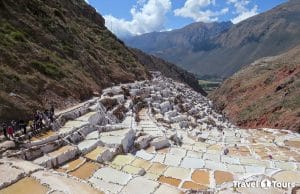
The Salt Mines of Maras are very old salt mines where salt is still being mined by hand in the present day. The complex consists of more than 3000 salt wells of different sizes and dimensions.
These wells are scattered along the banks of a small creek. The salt ponds retain water that has flowed down from Qaqawiñay Mtn. As the water evaporates, the salt crystals are left behind. This salt is harvested and processed for human, animal, and industrial consumption.
These salt pools are the property of the families who live in the traditional town of Maras, which is 7 km. distant from the Salineras Salt Mines.
Maras was an important political and administrative center during colonial times. This was because Maras supplied salt to the highlands of southern Peru. The town was inhabited by noble Spanish settlers who displayed their wealth by adorning the lintels and doors of their houses with their various coats-of-arms.
Around Salineras is where you can find zip-lining, trekking, mountain biking, and 4-wheel drive ATV’s for rent.
Uchuy Qosqo Arqueological Center
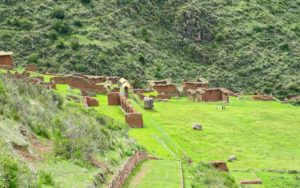
Uchuy Qosqo in Quechua means ‘Little Cusco’. Uchuy Qosqo Arqueological Center is a small Inca town made out of mud and stone that is located on a narrow plateau a few hundred meters above the Sacred Valley. It is across the river from the town of Lamay, and was thought to be the residence of the Inca Viracocha. In olden times, the town was called Qacyaqhawana which signified ‘from where the rays are observed’.
Uchuy Qosqo is composed of numerous mud huts, a large hall called a kallanka which is about 40 meters long, and lots of roads, aqueducts, agricultural terraces, qolqas (granaries,) and guard posts set on the edge of the precipice.
Because it is hard to get to, this tourist destination is not part of any standard tour of the Sacred Valley. But this is a site that shouldn’t be missed. Besides appreciating the lavishness of this Inca town, the view from here is magnificent. Across the Valley is the great glacier-covered peak of Pitusiray, and below you’ll see the city of Calca.
How to get to the Sacred Valley
There are many different ways to reach the villages and the archeological complexes of the Sacred Valley: by inter-city transport to Pisac, Calca, or Urubamba from Cusco; on foot by hiking on the trail to Uchuy Qosqo-Calca; or by taking a tour that covers most of the tourist attractions in the Sacred Valley.
Tour of the Sacred Valley
To take a tour of the Sacred Valley, it is good to remember that there are at least 4 different alternatives. You can choose shared service or private service. All tours depart from and return to Cusco.
- The Sacred Valley Tour: Pisac, Ollantaytambo, and Chinchero.
- The Alternative Sacred Valley Tour: Moray, Maras, Salineras, and Chinchero.
- And the Sacred Valley Tour with Connection to Machu Picchu: Pisac, Ollantaytambo, and Machu Picchu.
